- Joined
- 21 April 2009
- Messages
- 13,170
- Reaction score
- 6,058
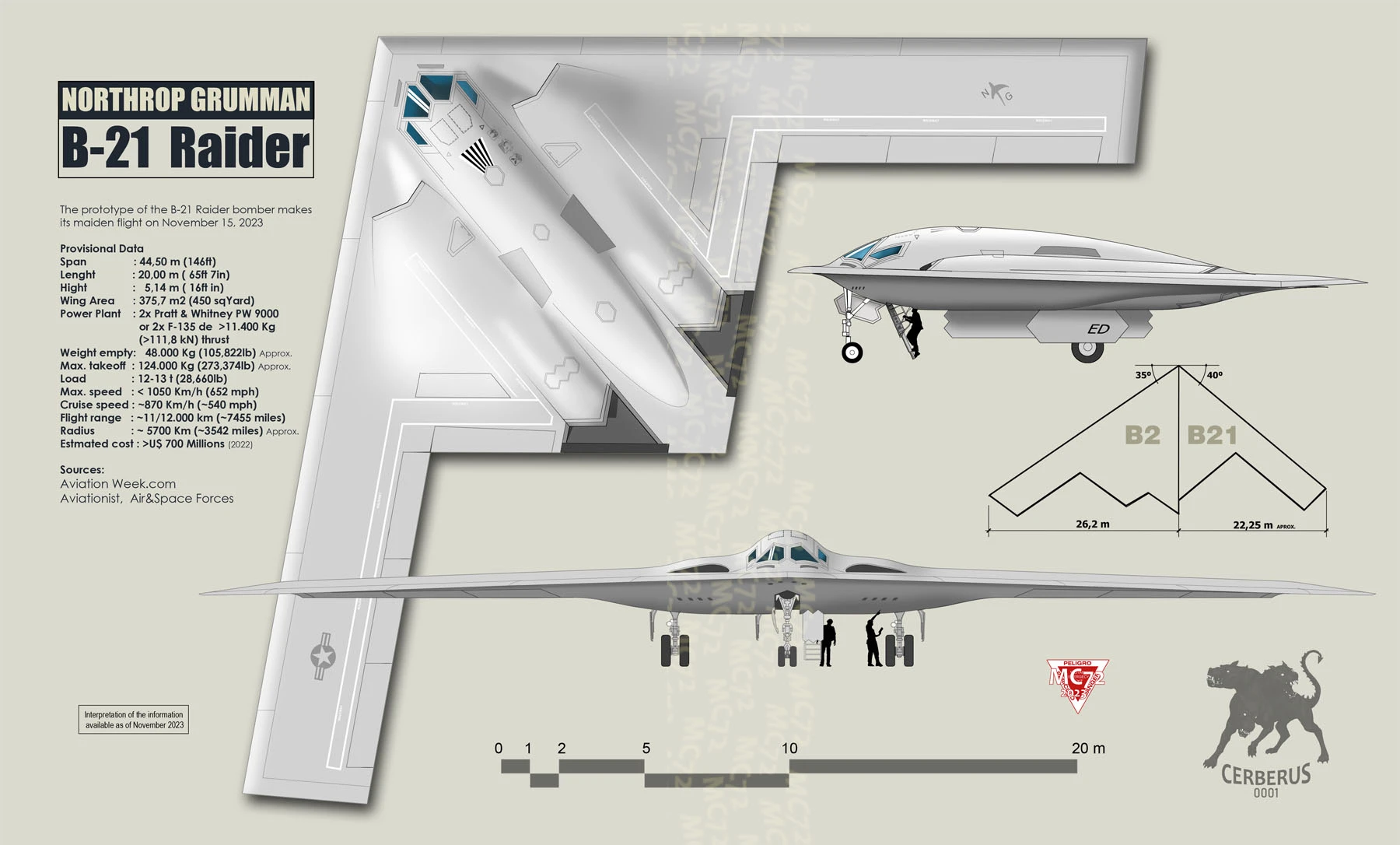
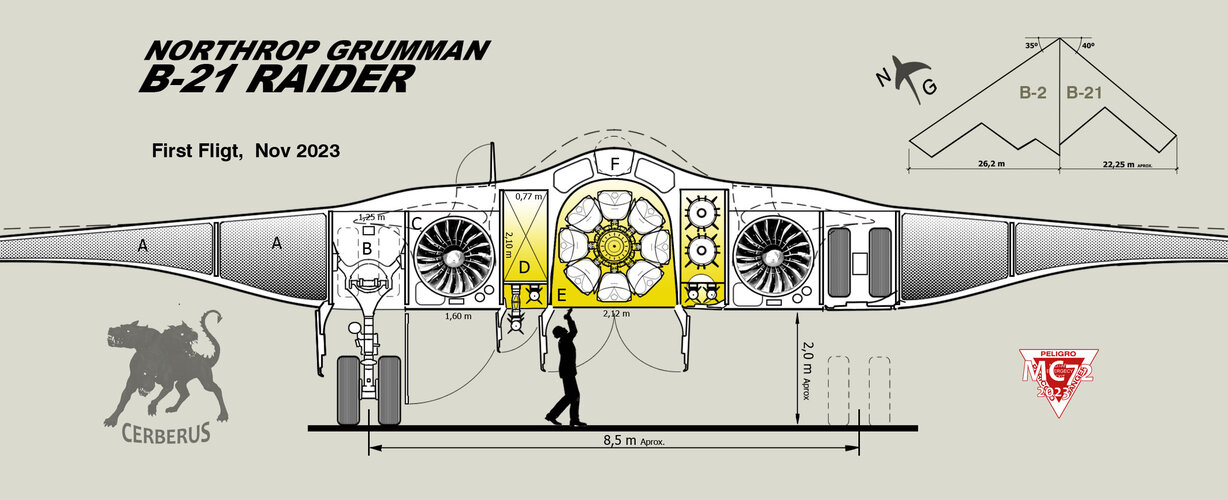
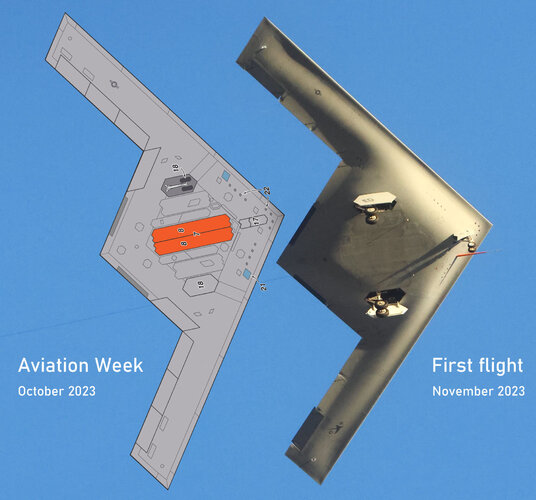
this is not October, but updated postflight November Joe Picarella artcompared to the version that appeared in Aviation Week in October 2023
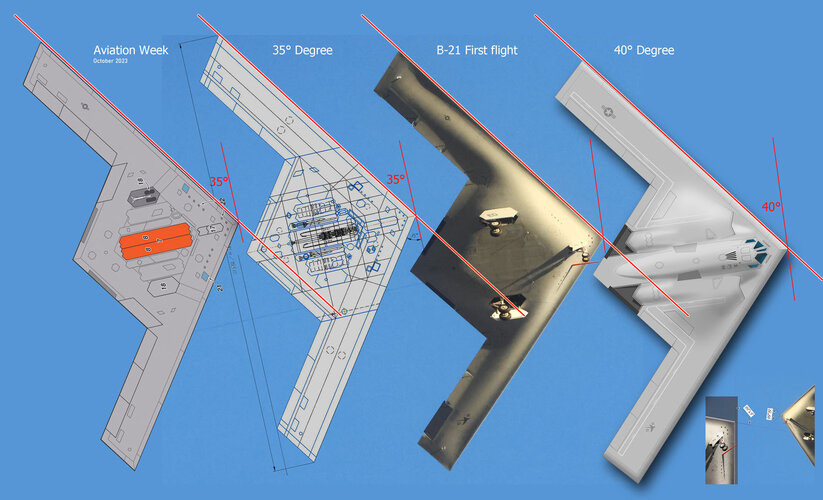 This angular difference causes the central box of the plane as well as the wingtips to be deformed with respect to the plane seen in public on its first flight in November.
This angular difference causes the central box of the plane as well as the wingtips to be deformed with respect to the plane seen in public on its first flight in November.Looking at the top of the aircraft, forward of the inboard elevons, if the aircraft does in fact has inlayed surfaces, I would assume they would be used during landing as a type of spoiler, these would be from the X-47A and B. Very early on in the program for the B-2 there was aft, outboard underbelly flaps which were completely ineffective and were pinned up in-place for AV1-AV3 then removed completely during the next block upgrade. I'm pretty sure that AV4 and on, they were non-existent. When we built the iron bird at Pico, the actuators but were installed but in-active then removed.The Cerberus Flight
In November the long-awaited new Northrop B-21 Raider stealth bomber flies, singularly it is done without the classic veil of secrecy that usually surrounds these important black projects until their total maturation; The reasons for this propaganda display may be due to several reasons, such as a way to give face to the new game changer of the Air Force, which in these complex times are an important asset on the geopolitical level, both for allies and adversaries, It is also important to show the image of a healthy defense industry that is powerful and at the technological forefront, at least one generation ahead in this specialty, when China or Russia are still trying to match the B-2 Spirit of the first generation, which is now 33 years old, The United States launches the second strong generation in addition to all the experience gained from the three-decade operation of the B-2; On the other hand, the maximum secrets that surround the fleeting morphology of the brand new B-21 Raider are not exposed excessively, which in a certain way emphasizes the lines of the old B-2 Spirit, but that surely keeps in its bowels the numerous high-level technologies that are jealously guarded inside.
Even so, the “generous” images of the first flight of the Northrop B-21 Raider allow us to refine a somewhat more precise idea of the general configuration of this new bomber and be able to establish certain concepts:
1- From the new images taken from various angles, it can be established that the B-21 Raider has a single large weapons bay with capacity for a multipurpose rotary launcher (the B-2 has 2)
2- It is also highlighted that the propulsion of this bomber is Bi-engine and not Tetra-engine as in the case of the larger B-2 Spirit; There remains a cloak of secrecy over the selected propellant, which could be a variant of the military PW-9000 derived from the civil PW-1000 family. Another candidate may be a variant based on the PW F-135 used in the F-135 program. 35, and finally there is also the GE XA-100 which is expected to replace some variants of the same PW F-135 (except the STOVL variant).
3- Between the central warehouse and the engine bays appear what appear to be smaller warehouses in the same style as those of the USAF F-22 or the PLAAF J-22, which could be intended for Air-Air weapons and also to additional Air-Ground or Air-Sea attack weaponry. It is not ruled out that in the future they could house energy weapons.
4- The B-21 has its wings angled at 40º degrees and not at 35º as suggested by the previous interpretation of numerous publications to date that replicate the angulation applied to the B-2 Spirit; This greater arrow of the B-21 Raider in its entire configuration suggests higher transonic speed performances than those of the B-2.
This angulation is repeated throughout the perimeter (front and rear, producing a symmetrical central body in the shape of a rhombus with vertices of 100º in the bow and stern and 80º on the sides, which configures a load-bearing body with great volumetric capacity where they are installed. all the specialized elements of this new bomber, the extension of the sides forms the wings with their fuel tanks.
5- The fenestration of the cockpit of the B-21 Raider is particularly small, surely seeking to reduce the surface of these windshields as much as possible with sufficient vision for general flight activities. The cabin internally must have space for the pilot and co-pilot seats. On the other hand, pilots must have electronics that provide them with a very high “Situational Awareness” of high quality provided by both on-board electronics and satellite links or between similar units.
6- Last but not least, it is suggested and not at all unlikely that to increase the deterrent power of this machine that it can fly in “Drone” mode (without a crew), multiplying the capabilities of this bird by not depending on the human resistance, being able to fly long missions solely dependent on in-flight resupply with Tanker Drones, which implies that the 100 planned units can have a 24/7 presence and projection.
Greetings MC72
Dear overscan (PaulMM), the Photo in question of the Northrop Grumman B-21 Raider (I repeat) is taken almost vertically to the impartial observer, it is a very powerful and undeniable document, the theoretical distortion with a total vertical by trigonometry is very minimal and the angle of the nose of this aircraft has even been measured, a value that is 99° and fraction (Post by Mr. Paralay in an early and accurate post), in short it is practically 100° for the nose of the B-21, very far from the mythical 110° of the B-2 Spirit's nose and the distorted material previously delivered by interested agencies.The detailed underside views you are relying on are not from directly below - so your conclusions on wing angle are probably incorrect.
IndeedLooking at the top of the aircraft, forward of the inboard elevons, if the aircraft does in fact has inlayed surfaces, I would assume they would be used during landing as a type of spoiler, these would be from the X-47A and B. Very early on in the program for the B-2 there was aft, outboard underbelly flaps which were completely ineffective and were pinned up in-place for AV1-AV3 then removed completely during the next block upgrade. I'm pretty sure that AV4 and on, they were non-existent. When we built the iron bird at Pico, the actuators but were installed but in-active then removed.
IndeedLooking at the top of the aircraft, forward of the inboard elevons, if the aircraft does in fact has inlayed surfaces, I would assume they would be used during landing as a type of spoiler, these would be from the X-47A and B. Very early on in the program for the B-2 there was aft, outboard underbelly flaps which were completely ineffective and were pinned up in-place for AV1-AV3 then removed completely during the next block upgrade. I'm pretty sure that AV4 and on, they were non-existent. When we built the iron bird at Pico, the actuators but were installed but in-active then removed.
Me neither. They’re maintenance hatches for the engines and bombing rack.I'm still not totally sold on the bays between the engines and the central weapons bay being weapons bays. Or at least not for their entire length.
I think we've demonstrated its 35 beyond reasonable doubt.35 vs. 40 for dog ears
Dear,Once more. What the sweep angle on these photos?


Dear,
with the many photos available but out of context, ....
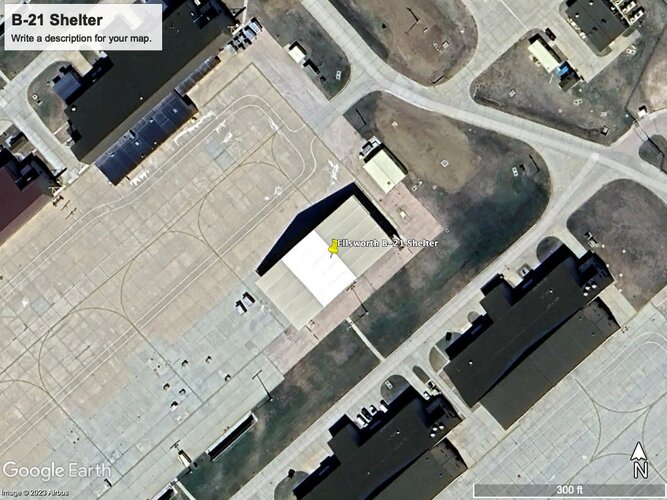
I thought that common understanding is that photographer standing almost right below flightpath gets more accurate planform view on overflight than those standing a mile or so to the side.Dear,
with the many photos available but out of context, it is almost more of a problem because if they are taken out of context, a cherry picking can be done tailored to the argument that you want to promote or vice versa, so first it is important to put these in a common context and thus understand relative position with respect to a fixed observer can easily fool the eye about the geometry of a moving 2D object.
If you understand how perspective works and construct the vanishing point at the correct location, you only need one image.
Dark spots on upper surface are placed not above engine bays but seemingly right above mystery bays so APU exhausts with their hot air may be there - just like APU inlets (I don't see any at the bottom but they shouldn't be big - but should be doubled as there are two APU as there are two spots on top. Or...who knows.Engine and weapons bays have their own doors for that.
ECS, EDG, APU, may be OBIGGS access.
Just this once, I will. I'll enlighten you to something called "Google." It took me less than a minute to find this.This is Wonderful and it's so simple
So I hope you will enlighten us shortly
Thank you, it will surely help me improve some forgotten techniques; Last year I made a very speculative cutaway of what the B-21 could be, with two engines in the central bomb bay and at that time the idea of reproducing the wing angle without many references was 35 degrees. In the future I hope to order all the news in a new cutaway Aggiornato of the B-21.Just this once, I will. I'll enlighten you to something called "Google." It took me less than a minute to find this.
View: https://youtu.be/0lJy61KMT88?si=DlJ2XLtpYOLLh0gz
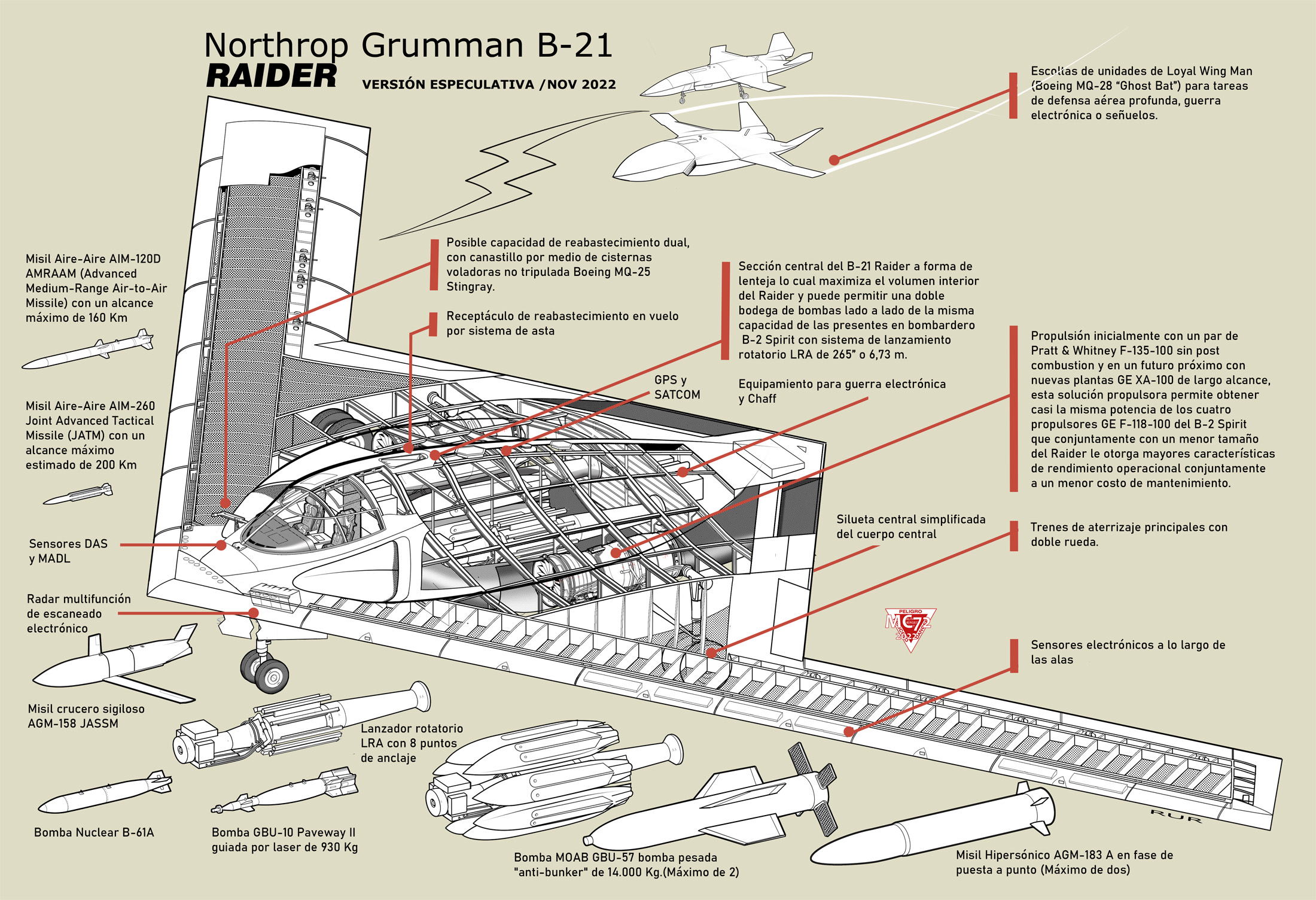
The upper part of this new bird maintains several doubts and mysterious hints, such as the dark patches on the back or the exact geometry of the air intake or exhaust lips.Looking at the top of the aircraft, forward of the inboard elevons, if the aircraft does in fact has inlayed surfaces, I would assume they would be used during landing as a type of spoiler, these would be from the X-47A and B. Very early on in the program for the B-2 there was aft, outboard underbelly flaps which were completely ineffective and were pinned up in-place for AV1-AV3 then removed completely during the next block upgrade. I'm pretty sure that AV4 and on, they were non-existent. When we built the iron bird at Pico, the actuators but were installed but in-active then removed.
Later there is a photo where a cable comes out of one of these figures.Indeed
There are two surfaces on the underside that perform (I assume) the same joint air brake function.
Due to the photographic material available, although the general shape is clear, there is still no complete vision of the exact configuration and distribution of the different surface elements.
Later there is a photo where a cable comes out of one of these figures.
Being a prototype on its first flight, I don't think they were subtracted from an airbrake, especially on the first flight, which leaves the braking system in flight a mystery or at least until a landing video of a B-21 appears.
Greatings
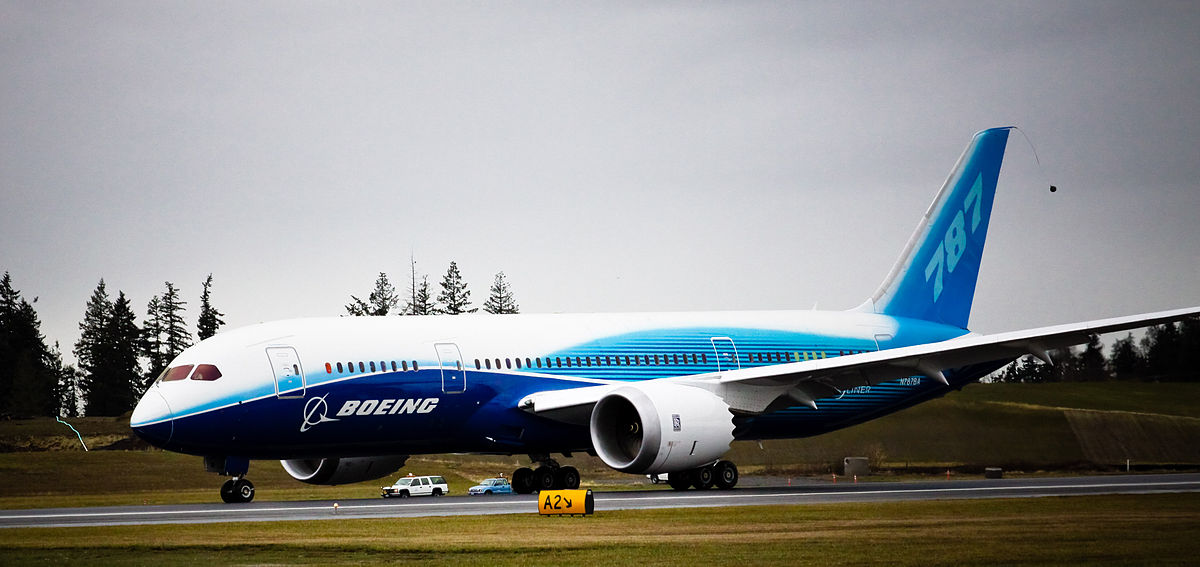
You have three control surfaces on outer wing sections, why have dedicated airbrakes if you can open say pair of three in scissors mode to act as airbrakes?which leaves the braking system in flight a mystery or at least until a landing video of a B-21 appears.
Greatings
The APU is for ground operations only so it’s off during flight. There’s only one APU.Dark spots on upper surface are placed not above engine bays but seemingly right above mystery bays so APU exhausts with their hot air may be there - just like APU inlets (I don't see any at the bottom but they shouldn't be big - but should be doubled as there are two APU as there are two spots on top. Or...who knows.
So spots should save RAM structure and topcoat from burns or/and soot. Some white objects barely seen inside spots on ground shots.
Just a theory though.
Fact they are off during flight doesn't mean you don't need bother of exhaust temps on the ground. And how do you know it's "only one" APU? For example - as it was said above - B-2 has two (in MLG bays).The APU is for ground operations only so it’s off during flight. There’s only one APU.
I tried ImageModeler. I'm garbage at running this program, but I managed to get a sweepback angle of between 33.9 and 35.0 degrees.I'd try ImageModeler or ReCap.
China could probably just take a measurement in the CAD files. I fully expect to hear in the coming years that the B-21 is utterly compromised.I tried ImageModeler. I'm garbage at running this program, but I managed to get a sweepback angle of between 33.9 and 35.0 degrees.
Meh.
I'm satisfied to wait for a clear overhead view. I'm sure the Chinese have several.
Oh, sure. But they'll probably leak the photos they took of the test flight from a balloon first.China could probably just take a measurement in the CAD files. I fully expect to hear in the coming years that the B-21 is utterly compromised.
That's pretty conclusive that it isn't 40 degrees though.I tried ImageModeler. I'm garbage at running this program, but I managed to get a sweepback angle of between 33.9 and 35.0 degrees.
Meh.
I'm satisfied to wait for a clear overhead view. I'm sure the Chinese have several.
